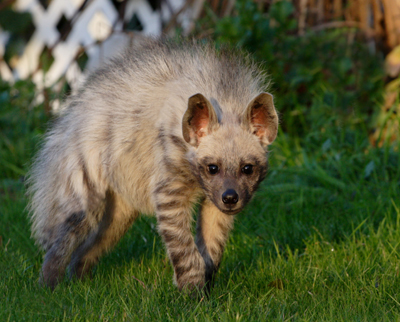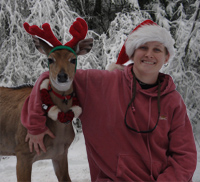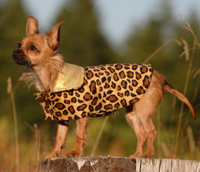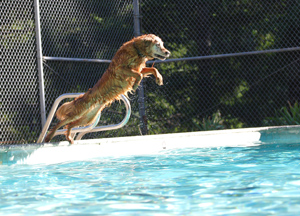I am feeling lazy today, so I thought instead of writing a blog I would let the Animal Rights leaders write it for me. Since I have written several posts disagreeing with their agenda it seems productive to let them share that agenda in their own words. In fairness, there are several different attitudes within the Animal Rights movement, so I have tried to select a few quotes from each of the major players so as to present a representative cross-section of their beliefs, and I am sure they would not all agree with every one of these quotes.
So, without further ado, here are the words of the leaders of the animal rights movement:
In fact, I don’t want to see another dog or cat born—–Wayne Pacelle, HSUS President
I despise ‘animal welfare.’ That’s like saying, ‘Let’s beat the slaves three times a week instead of five times a week’.—–Gary Yourofsky, PETA
I don’t think you’d have to kill — assassinate — too many … I think for 5 lives, 10 lives, 15 human lives, we could save a million, 2 million, 10 million non-human lives.—–Dr. Jerry Vlasak, Animal Defense League
I would go to work early, before anyone got there, and I would just kill the animals myself. Because I couldn’t stand to let them go through that. I must have killed a thousand of them, sometimes dozens every day.—–Ingrid Newkirk, President of PETA
I wish we all would get up and go into the labs and take the animals out or burn them down.—–Ingrid Newkirk, President of PETA
I would be overjoyed when the first scientist is killed by a liberation activist.—–Vivien Smith, Animal Liberation Front
Arson, property destruction, lying, burglary and theft are ‘acceptable crimes’ when used for the animal cause.—–Alex Pacheco, PETA
One generation and out. We have no problem with the extinction of domestic animals. They are creations of human selective breeding.—–Wayne Pacelle, HSUS President
If an animal has any rights at all, it’s got the right not to be eaten.—–Gary Franicione, legal scholar
….the only responsible breeders are ones who, upon learning about their contribution to the overpopulation crisis, spay or neuter their animals, and get out of the business altogether.—–PETA
Breeders must be eliminated! As long as there is a surplus of companion animals in the concentration camps referred to as shelters, and they are killing them because they are homeless, one should not be allowed to produce more for their own amusement and profit. If you know of a breeder in the Los Angeles area, whether commercial or private, legal or illegal, let us know and we will post their name, location, phone number so people can write them letters telling them ‘Don’t Breed or Buy, While Others DIE.’—–Animal Defense League
Even if animal tests produced a cure, we’d be against it.—–Ingrid Newkirk, President of PETA
If killing is the only way to stop them, then I said killing them would certainly be justified.—–Dr. Jerry Vlasak, Animal Defense League
If that means going onto their farms, releasing their animals and burning the place to the ground, that’s morally justifiable, in our opinion…There were always innocent people who got hurt somewhere along the way but it was important that those who oppressed one group of people be stopped, and we don’t see the animal liberation struggle being substantially different from these other struggles.… A sustained campaign against a particular industry or a particular organization has the potential to be quite effective.—–Dr. Jerry Vlasak, Animal Defense League
If the death of one rat cured all diseases, it wouldn’t make any difference to me.—–Chris DeRose, Last Chance for Animals
If you had to hurt somebody or intimidate them or kill them, it would be morally justifiable.—–Dr. Jerry Vlasak, Animal Defense League
In a perfect world, all other than human animals would be free of human interference, and dogs and cats would be part of the ecological scheme.—–PeTA’s Statement on Companion Animals.
In a war you have to take up arms and people will get killed, and I can support that kind of action by petrol bombing and bombs under cars, and probably at a later stage, the shooting of vivisectors on their doorsteps. It’s a war, and there’s no other way you can stop vivisectors.—–Tim Daley, British Animal Liberation Front
It doesn’t matter if there are people in there. They’re irrelevant! It doesn’t matter about the police. They’re irrelevant! It doesn’t matter about the high fences. They’re irrelevant! It doesn’t matter about the doors. They’re irrelevant! It doesn’t matter about the locks. They’re irrelevant! What matters is our brothers and sisters in there. Smash everything when the cops aren’t here! Get them out! We’ll sweep the police aside. We’ll sweep the government aside.—–Robin Webb, Animal Liberation Front
Let us allow the dog to disappear from our brick and concrete jungles–from our firesides, from the leather nooses and chains by which we enslave it.—–John Bryand, animal ethics author
My goal is the abolition of all animal agriculture.—–JP Goodwin, HSUS
Not only are the philosophies of animal rights and animal welfare separated by irreconcilable differences… the enactment of animal welfare measures actually impedes the achievement of animal rights… Welfare reforms, by their very nature, can only serve to retard the pace at which animal rights goals are achieved.—–Gary Franicione, legal scholar and Tom Regan, professor and author on philosophy
Nothing is more violent and radical than what’s being done to non-human animals in our society. If a researcher won’t stop abusing animals and is stopped physically, whether with the use of force, or is killed, I certainly wouldn’t lose sleep over that idea.—–Dr. Jerry Vlasak, Animal Defense League
The theory of animal rights simply is not consistent with the theory of animal welfare… Animal rights means dramatic social changes for humans and non-humans alike; if our bourgeois values prevent us from accepting those changes, then we have no right to call ourselves advocates of animal rights.—–Gary Franicione, legal scholar
We are not especially ‘interested in’ animals. Neither of us had ever been inordinately fond of dogs, cats, or horses in the way that many people are. We didn’t ‘love’ animals.—–Peter Singer, Animal Ethicist
We do not have the right to use animals for any real or perceived need, whether it be food, clothing, entertainment, medical issues.—–Janine Motta, NJ Animal Rights Alliance
Whatever it takes to stop someone from abusing animals is certainly morally acceptable.—–Dr. Jerry Vlasak, Animal Defense League
…no movement for social change has ever succeeded without ‘the militarism component’….Thinkers may prepare revolutions, but bandits must carry them out,—–Ingrid Newkirk, President of PETA
….we would like an end to pet shops and the breeding of animals.—–Ingrid Newkirk, President of PETA
A burning building doesn’t help melt people’s hearts, but times change and tactics, I’m sure, have to change with them. If you choose to carry out ALF-style actions, I ask you to please not say more than you need to, to think carefully who you trust, to learn all you can about how to behave if arrested, and so to try to live to fight another day.—–Ingrid Newkirk, President of PETA
Animal liberation, of which the anti-vivisection movement is a part, animal liberation is not a campaign. It is not a struggle. It is a war! It is an all-out bloody war, in which the countless hundreds of millions of casualties have, so far, all been on one side. How can we allow that to continue?—–Robin Webb, Animal Liberation Front
….they are like slaves, even if well-kept slaves.—–PETA
Ask your mommy how many dead animals she killed to make her fur clothes. Then tell her that you know she paid men to hurt and kill the animals. Everyone knows. And the sooner she stops wearing fur, the sooner the animals will be safe. Until then, keep your doggie or kitty friends away from mommy; she’s an animal killer!—–PETA comic book
Bank executives have had their yachts sunk behind their houses. Cars have been blown up; windows have been smashed; offices have been stormed. We’re tired of yelling at buildings — no one cares. We’re tired of yelling at executives while they’re in those buildings, and allowing them to go home and forget about us who are out there that afternoon — we’re going to their homes. We’re doing what’s effective. We’re shutting this company down.—–Lauren James
Businesses are terrified. They have no idea what I’m going to do next.—–Ingrid Newkirk, President of PETA
But it is also important to stop manufacturing pets, thereby perpetuating a class of animals forced to rely on humans to survive.—–PETA
Hit them in their personal lives, visit their homes . Actively target U.S. military establishments within the United States… strike hard and fast and retreat in anonymity. Select another location, strike again hard and fast and quickly retreat in anonymity … Do not get caught. DO NOT GET CAUGHT. Do not get sent to jail. Stay alert, keep active, and keep fighting.———-Craig Rosenbraugh
Humane care is simply sentimental, sympathetic patronage.—–Dr. Michael W. Fox, HSUS
I am not a morose person, but I would rather not be here. I don’t have any reverence for life, only for the entities themselves. I would rather see a blank space where I am. This will sound like fruitcake stuff again but at least I wouldn’t be harming anything.—–Ingrid Newkirk, President of PETA
I don’t have a hands-on fondness for animals…To this day I don’t feel bonded to any non-human animal. I like them and I pet them and I’m kind to them, but there’s no special bond between me and other animals.—–Wayne Pacelle, HSUS President quoted in Bloodties: Nature
I don’t approve of the use of animals for any purpose that involves touching them – caging them.—–Dr. Neal Barnard
I don’t use the word pet. I think it’s speciesist language. I prefer companion animal. For one thing, we would no longer allow breeding. People could not create different breeds. There would be no pet shops. If people had companion animals in their homes, those animals would have to be refugees from the animal shelters and the streets. You would have a protective relationship with them just as you would with an orphaned child. But as the surplus of cats and dogs (artificially engineered by centuries of forced breeding) declined, eventually companion animals would be phased out, and we would return to a more symbiotic relationship enjoyment at a distance.—–Ingrid Newkirk, President of PETA
I think violence is part of the struggle against oppression. If something bad happens to these people, it will discourage others. It is inevitable that violence will be used in the struggle and that it will be effective—–Dr. Jerry Vlasak, Animal Defense League
If an ‘animal abuser’ were killed in a research lab firebombing, I would unequivocally support that, too.—–Gary Yourofsky, PETA
If someone is killing, on a regular basis, thousands of animals, and if that person can only be stopped in one way by the use of violence, then it is certainly a morally justifiable solution.—–Dr. Jerry Vlasak, Animal Defense League
I’m not only uninterested in having children. I am opposed to having children. Having a purebred human baby is like having a purebred dog; it is nothing but vanity, human vanity.—–Ingrid Newkirk, President of PETA
It won’t ruin our movement if someone gets killed in an animal rights action. It’s going to happen sooner or later. The Animal Liberation Front, the Earth Liberation Front — sooner or later there’s going to be someone getting hurt. And we have to accept that fact. It’s going to happen. It’s not going to hurt our movement. Our movement will go on. And it’s important that we not let the bully pulpit of the FBI and the other oppression agencies stop us from what we’re doing. —–Dr. Jerry Vlasak, Animal Defense League
It’s not about loving animals. It’s about fighting injustice. My whole goal is for humans to have as little contact as possible with animals.—–Gary Yourofsky, PETA
My dream is that people will come to view eating an animal as cannibalism.—–Henry Spira
No strictly peaceful movement has succeeded in liberation, I think the animal rights movement has been restrained in its use of force, mostly because people in the struggle are often people of privilege who aren’t willing to risk losing that privilege. Violence has been a necessary component of every serious liberation struggle…Violence is not the only path to liberation, but likely an indispensable one…the Press Office would like to be clear on this matter: we support all the liberationists from the graffiti artists and ALF liberator to the Animal Rights Militia, Justice Department and Revolutionary Cells.—–Dr. Jerry Vlasak, Animal Defense League
Our goal is to make breeding like drunk driving and smoking.—–Kim Sturla, Fund for Animals
Perhaps the mere idea of receiving a nasty missive will allow animal researchers to empathize with their victims for the first time in their lousy careers. I find it small wonder that the laboratories aren’t all burning to the ground. If I had more guts, I’d light a match.—–Ingrid Newkirk, President of PETA
The bottom line is that people don’t have the right to manipulate or to breed dogs and cats … If people want toys, they should buy inanimate objects. If they want companionship, they should seek it with their own kind,—–Ingrid Newkirk, President of PETA
Their lives are restricted to human homes where they must obey commands and can only eat, drink, and even urinate when humans allow them to.—–PETA
There are about 2,000 people prepared at any one time to take action for us … The children are enjoying a lifestyle built on the blood and abuse of innocent animals. Why should they be allowed to close the door on that and sit down and watch TV and enjoy themselves when animals are suffering and dying because of the actions of the family breadwinner? They are a justifiable target for protest.—–Robin Webb, Animal Liberation Front
There are two main goals behind ALF actions. The first is obviously to remove as many animals as possible from fur farms, vivisection labs, and other areas of abuse. The second is to cause as much economic damage to these industries and persons as possible.—–Dr. Jerry Vlasak, Animal Defense League
Things are picking up…It’s not going to make this thing go away… don’t think you’re going to find anybody deterred…There’s a lot of people willing to die for the cause. —–Dr. Jerry Vlasak, Animal Defense League
Throughout the late ’80s, me and a handful of friends just like you people here, we started to break windows, we started to slash tires, we started to rescue animals from factory farms and vivisection breeders, and we graduated to breaking into laboratories . As long as we emptied the labs of animals, they were still easily replaced. So that’s when the ALF in this country, and my cell, started engaging in arson.—–Rodney Coronado, PETA fund recipient and convicted arsonist
To give a child animal products is a form of child abuse.—–Dr. Neal Barnard, Physician’s Committee for Responsible Medicine
We are not terrorists, but we are a threat. We are a threat both economically and philosophically. Our power is not in the right to vote but the power to stop production. We will break the law and destroy property until we win.—–Dr. Steven Best
We encourage others to find a local Earth raper and make them pay for the damages they are inflicting on our communities… Furriers, meat packers, bosses, developers, rich industry leaders are all Earth rapers.—–Craig Rosenbraugh
We have a 100 per cent success rate. Whoever we choose to target is finished.—–Heather James
We will be just as ruthless as any of our targets. We will go for the throat.—–Dan Matthews
Why should any one of us feel that ‘it shouldn’t be me taking that brick and chucking it through that window? Why shouldn’t I be going to that fur farm down the road and opening up those cages?’ It’s not hard; it doesn’t take a rocket scientist. You don’t need a 4-year degree to call in a bomb hoax. These are easy things, and they’re things that save animals: And so I want all of you in this room to, A) Question not just what is right and wrong, but what is effective, And B) why can’t all of us be doing it? I think the animal rights movement is strong – that’s my opinion. It’s time to start flexing our muscles.—–Kevin Kjonaas, Animal Defense League
Would I rather the research lab that tests animals is reduced to a bunch of cinders? Yes.—–Ingrid Newkirk, President of PETA
…eating animals involves an intentional decision to participate in the suffering and death of nonhumans where there is no plausible moral justification.—–Gary Franicione, legal scholar
Believe me, you don’t have to worry about prison. I’ve been there — it’s a doggle. You can put your feet up and recharge your batteries, and go back out there when you’re released and start all over again. You can go to education to read up. I mean someone, someone actually read up on electronics while they were in prison, and went out and started doing electronic incendiary devices. Use your time inside to teach yourself!—–Robin Webb, Animal Liberation Front
Come here when it’s dark, when there’s no moon, with people you can trust! There are individuals in there who need you to do that! But when you get them out, don’t leave the equipment or the building standing either! Smash it! Smash it! Smash it once and for all!—–Robin Webb, Animal Liberation Front
Here’s a little model I’m going to show you here. I didn’t have any incense, but — this is a crude incendiary device. It is a simple plastic jug, which you fill with gasoline and oil. You put in a sponge, which is soaked also in flammable liquid — I couldn’t find an incense stick, but this represents that. You put the incense stick in here, light it, place it — underneath the ‘weapon of mass destruction,’ light the incense stick – sandalwood works nice — and you destroy the profits that are brought about through animal and earth abuse. That’s about — two dollars. —–Rodney Coronado, PETA fund recipient and convicted arsonist
I maintain that we ought to abolish the institution and stop causing or facilitating the existence of more ‘companion’ animals.—–Gary Franicione, legal scholar
If they have me arrested, that’s good for me, bad for them. We have 75,000 members of our club who aren’t going to like it—–Dee Crenshaw
If we really believe that animals have the same right to be free from pain and suffering at our hands, then, of course we’re going to be, as a movement, blowing things up and smashing windows … I think it’s a great way to bring about animal liberation … I think it would be great if all of the fast-food outlets, slaughterhouses, these laboratories, and the banks that fund them exploded tomorrow. I think it’s perfectly appropriate for people to take bricks and toss them through the windows. … Hallelujah to the people who are willing to do it.—–Bruce Friedrich, PETA
In a perfect world, we would not keep animals for our benefit, including pets,—–Tom Regan, professor and author on philosophy
It is time we demand an end to the misguided and abusive concept of animal ownership. The first step on this long, but just, road would be ending the concept of pet ownership.—–Elliot Katz, In Defense of Animals
Liberating our language by eliminating the word ‘pet’ is the first step… In an ideal society where all exploitation and oppression has been eliminated, it will be NJARA’s policy to oppose the keeping of animals as ‘pets.’—–New Jersey Animal Rights Alliance
Our goal: to convince people to rescue and adopt instead of buying or selling animals, to disavow the language and concept of animal ownership.—–Elliot Katz, In Defense of Animals
Our nonviolent tactics are not as effective. We ask nicely for years and get nothing. Someone makes a threat, and it works.—–Ingrid Newkirk, President of PETA
Probably everything we do is a publicity stunt … we are not here to gather members, to please, to placate, to make friends. We’re here to hold the radical line.—–Ingrid Newkirk, President of PETA
Property destruction is a legitimate political tool called economic sabotage, and it’s meant to attack businesses and corporations.—–David Barbarash
The cat, like the dog, must disappear… We should cut the domestic cat free from our dominance by neutering, neutering, and more neutering, until our pathetic version of the cat ceases to exist.—–John Bryand, animal ethics author
Today’s terrorist is tomorrow’s freedom fighter.—–Kevin Kjonaas, Animal Defense League
We should stop bringing more domestic animals into existence.—–Gary Franicione, legal scholar
We’re a new breed of activism. We’re not your parents’ Humane Society. We’re not Friends of Animals. We’re not EarthSave. We’re not Greenpeace. We come with a new philosophy. We hold the radical line. We will not compromise! We will not apologize, and we will not relent! … Vivisection is not an abstract concept. It’s a deed, done by individuals, who have weaknesses, who have breaking points, and who have home addresses!—–Kevin Kjonaas, Animal Defense League
When you’re a 20-something grassroots activist, and you’re deciding how to spend your time and money to make a difference, it makes a lot of sense to cause a million in damage with just $100 of investment. That’s a better return than any other form of activism I’ve been involved in.—–Rodney Coronado, PETA fund recipient and convicted arsonist
Animals for the most part just need to be left alone.—–Wayne Pacelle, HSUS President
That the “meat” of my body, or a portion thereof, be used for a human barbecue, to remind the world that the meat of a corpse is all flesh, regardless of whether it comes from a human being or another animal and that fleshfoods are not needed; That my skin, or a portion thereof, be removed and made into leather products, such as purses, to remind the world that human skin and the skin of other animals is the same and that neither is “fabric” or needed; That my feet be removed and umbrella stands or other ornamentation be made from them, as a reminder of the depravity of killing innocent animals, such as elephants, in order that we might use their body parts for household items and decorations——Will of Ingrid Newkirk, President of PETA
Deep down, I truly hope that oppression, torture and murder return to each uncaring human tenfold! I hope that fathers accidentally shoot their sons on hunting excursions, while carnivores suffer heart attacks that kill them slowly.Every woman ensconced in fur should endure a rape so vicious that it scars them forever. While every man entrenched in fur should suffer an anal raping so horrific that they become disemboweled. Every rodeo cowboy and matador should be gored to death, while circus abusers are trampled by elephants and mauled by tigers. And, lastly, may irony shine its esoteric head in the form of animal researchers catching debilitating diseases and painfully withering away because research dollars that could have been used to treat them was wasted on the barbaric, unscientific practice vivisection.—–Gary Yourofsky, PETA
Phasing out the human race will solve every problem on earth, social and environmental.—–Les U. Knight
Pet ownership is an absolutely abysmal situation brought about by human manipulation.—–Ingrid Newkirk, President of PETA
The life of an ant and that of my child should be granted equal consideration.—–Michael W. Fox, HSUS
Note: I have taken these quotes from various sources, and have done my best to verify them , but it is certainly possible that there are some mistakes, so if you see a quote that you believe is incorrect, please let me know and I will look into it immediately! And while they are, as quotes by definition must be, taken out of context, it is my belief that each of them is representative of the view of the speaker. If there are quotes on this page with which the speaker does not agree, please let me know.

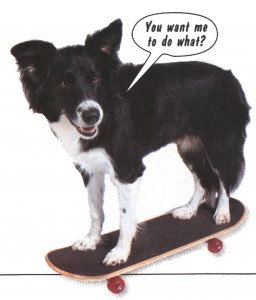
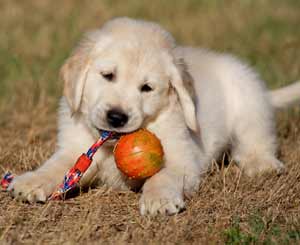 Considerable media and public attention have recently centered on the question of where a responsible person can look to find just the right animal. Many of the loudest voices offering opinions have been somewhat disingenuous. People and organizations such as PETA and HSUS, who believe that animals do not belong in captivity and that all pet owners and breeders are unconscionable, are not really offering advice on how to find the best puppy, they are offering advice that advances their agenda of exterminating all dogs as soon as possible. Additionally, the notion that adopting a dog from a shelter is the most humane option has become so politically correct that it is virtual blasphemy to recommend alternative sources, and many celebrities and other superficial animal lovers simply parrot this advice without seriously contemplating what is best for new owners, individual dogs, or dogs in general.
Considerable media and public attention have recently centered on the question of where a responsible person can look to find just the right animal. Many of the loudest voices offering opinions have been somewhat disingenuous. People and organizations such as PETA and HSUS, who believe that animals do not belong in captivity and that all pet owners and breeders are unconscionable, are not really offering advice on how to find the best puppy, they are offering advice that advances their agenda of exterminating all dogs as soon as possible. Additionally, the notion that adopting a dog from a shelter is the most humane option has become so politically correct that it is virtual blasphemy to recommend alternative sources, and many celebrities and other superficial animal lovers simply parrot this advice without seriously contemplating what is best for new owners, individual dogs, or dogs in general.